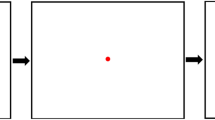Abstract
To track objects in video sequences, many studies have been done to characterize the target with respect to its color distribution. Most often, the Gaussian mixture model (GMM) is used to represent the object color density. In this paper, we propose to extend the normality assumption to more general families of distributions issued from the Pearson’s system. Precisely, we propose a method called Pearson mixture model (PMM), used in conjunction with Gaussian copula, which is dynamically updated to adapt itself to the appearance change of the object during the sequence. This model is combined with Kalman filtering to predict the position of the object in the next frame. Experimental results on gray-level and color video sequences show tracking improvements compared to classical GMM. Especially, the PMM seems robust to illumination variations, pose and scale changes, and also to partial occlusions, but its computing time is higher than the computing time of GMM.
Similar content being viewed by others
References
Leymarie F. and Levine M.D. (1993). Tracking deformable objects in the plane using an active contour model. IEEE Trans. PAMI 15(6): 617–634
Kass M., Witkin A.P. and Terzopoulos D. (1988). Snakes: active contour models. Int. J. Comput. Vis. 1(4): 321–331
McKenna S.J., Raja Y. and Gong S. (1999). Tracking colour objects using adaptive mixture models. Image Vis. Comput. 17(3/4): 225–231
Xiong G., Feng C. and Ji L. (2006). Dynamical Gaussian mixture model for tracking elliptical living objects. Pattern Recogn. Lett. 27(7): 838–842
Stern H. and Efros B. (2005). Adaptive color space switching for tracking under varying illumination. Image Vis. Comput. 23(3): 353–364
Peng N.S., Yang J. and Liu Z. (2005). Mean shift blob tracking with kernel histogram filtering and hypothesis testing. Pattern Recogn. Lett. 26: 605–614
Störring M., Kocka T., Andersen H.J. and Granum E. (2003). Tracking regions of human skin through illumination changes. Pattern Recogn. Lett. 24(11): 1715–1723
Delignon Y., Marzouki A. and Pieczynski W. (1997). Estimation of generalized mixtures and its application in image segmentation. IEEE Trans. Image Process. 6(10): 1364–1375
Nelsen R.B. (1998). An Introduction to Copulas, Lectures Notes in Statistics, vol. 139. Springer, Heidelberg
Brunel N. and Pieczynski W. (2005). Unsupervised signal restoration using hidden Markov chains with copulas. Signal Process. 85: 2304–2315
McKenna S.J., Gong S. and Raja Y. (1998). Modelling facial colour and identity with Gaussian mixtures. Pattern Recogn. 31(12): 1883–1892
Johnson N.L. and Kotz S. (1994). Distribution in Statistics: Continuous Univariate Distributions, vol. 1 and 2. Wiley, New York
Celeux G. and Diebolt D. (1985). The SEM algorithm : a probabilistic teacher algorithm derived from the EM algorithm for the mixture problem. Comput. Statist. Q. 2(1): 73–82
Kotz, S., Balakrishnan, N., Johnson, N.L.: Continuous Multivariate Distributions, vol.~1, Models and Applications of Wiley Series in Probability and Statistics, Applied Probability and Statistics Section. Wiley Interscience, Wiley, 2nd edn. (2000)
Minkler G. and Minkler J. (1993). Theory and Application of Kalman filtering. Magellan Book Company edition, Palm Bay (Florida, USA)
Fang, W., Pengfei, L.: A novel face segmentation algorithm. In: Proc. of the Int. Conf. Info-tech and Info-net (ICII’01), vol. 3, Beijing (China), 29 October – 1 November (2001)
Chai D. and Ngan K.N. (1999). Face segmentation using skin-color map in videophone applications. IEEE Trans. Circuits Systems Video Technol. 9(4): 551–564
Celeux G., Nascimento J. and Marques J. (2004). Learning switching dynamic models for objects tracking. Pattern Recogn. 37: 1841–1853
Author information
Authors and Affiliations
Corresponding author
Rights and permissions
About this article
Cite this article
Ketchantang, W., Derrode, S., Martin, L. et al. Pearson-based mixture model for color object tracking. Machine Vision and Applications 19, 457–466 (2008). https://doi.org/10.1007/s00138-008-0124-4
Received:
Revised:
Accepted:
Published:
Issue Date:
DOI: https://doi.org/10.1007/s00138-008-0124-4




